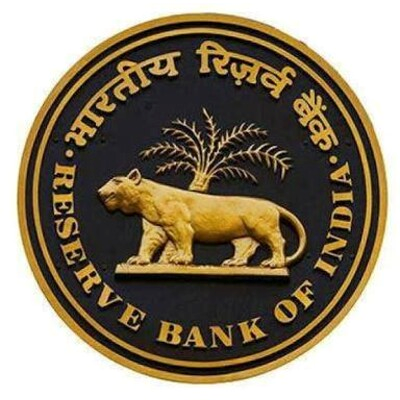The Future of Digital Payments: Navigating the UPI Landscape and New Banking Innovations
January 1, 2025, 9:33 pm

Location: India, Maharashtra, Mumbai
Employees: 1001-5000
Founded date: 2005
The digital payments landscape in India is evolving rapidly. The National Payments Corporation of India (NPCI) has made headlines by extending the deadline for imposing a market cap on Unified Payments Interface (UPI) players. This decision is a lifeline for giants like Google Pay and PhonePe, who dominate the market. Meanwhile, the Reserve Bank of India (RBI) is pushing for new features to enhance security in electronic funds transfers. Together, these developments shape the future of digital transactions in India.
The NPCI's decision to delay the market cap is a significant move. Initially proposed in November 2020, the cap aimed to level the playing field among UPI players. Yet, here we are, three extensions later. The current deadline is set for December 31, 2026. This delay is a boon for established players, who control a staggering 85% of UPI transaction volumes. PhonePe and Google Pay are the titans of this realm, while smaller players struggle to gain traction.
The lack of a Merchant Discount Rate (MDR) complicates matters. Without this fee, smaller players find it hard to raise funds. The absence of MDR is like a boat without a sail; it limits growth and innovation. For smaller fintech companies, the road ahead is rocky. They need capital to compete, but the current structure favors the giants. The NPCI's decision to lift user onboarding limits for WhatsApp Pay could shake things up. It opens the door for WhatsApp to expand its UPI services, potentially nibbling at the market share of the big players.
However, smaller players voice their concerns. They argue that the NPCI should have imposed the market cap sooner. With 20 new UPI apps launched this year, competition is heating up. Yet, the dominance of PhonePe and Google Pay casts a long shadow. The status quo benefits the established players while stifling new entrants. The fintech landscape needs balance, but the scales are tipped.
The RBI's new initiative adds another layer to this complex ecosystem. By April 1, 2025, banks will introduce a beneficiary bank account name look-up facility. This feature will allow users to verify the name of the account holder before initiating a transfer. It’s a safety net for remitters, reducing the risk of errors and fraud. Currently, UPI and Immediate Payments Service (IMPS) offer similar verification. The RBI aims to standardize this across RTGS and NEFT systems.
This move is a game-changer. It enhances user confidence in electronic transactions. Customers will have the ability to verify details before hitting send. The facility will be available through internet and mobile banking, as well as at bank branches. It’s a step towards a more secure digital payment environment.
The implementation of this feature requires collaboration. The NPCI is tasked with developing the system and onboarding all banks. This initiative reflects a growing recognition of the need for security in digital transactions. As more people embrace online payments, the potential for fraud increases. The RBI's proactive approach is a necessary safeguard.
The digital payments revolution is not without its challenges. The concentration of market share among a few players raises concerns. If a technical glitch occurs in the systems of these giants, it could disrupt services for millions. The stakes are high. A robust and diverse payment ecosystem is essential for stability.
The NPCI and RBI are navigating uncharted waters. They must balance innovation with regulation. The digital payments landscape is a double-edged sword. On one side, it offers convenience and speed. On the other, it poses risks that must be managed.
As the deadline for the market cap looms, the pressure mounts. Smaller players are eager for change. They want a fair chance to compete. The market is ripe for disruption, but the giants hold the reins. The NPCI's decisions will shape the future of UPI and digital payments in India.
In conclusion, the digital payments landscape in India is at a crossroads. The NPCI's extension of the market cap deadline and the RBI's new verification feature signal a pivotal moment. The balance between competition and security is delicate. As the industry evolves, stakeholders must work together to create a fair and secure environment for all players. The future of digital payments is bright, but it requires careful navigation to ensure that everyone can thrive.
The NPCI's decision to delay the market cap is a significant move. Initially proposed in November 2020, the cap aimed to level the playing field among UPI players. Yet, here we are, three extensions later. The current deadline is set for December 31, 2026. This delay is a boon for established players, who control a staggering 85% of UPI transaction volumes. PhonePe and Google Pay are the titans of this realm, while smaller players struggle to gain traction.
The lack of a Merchant Discount Rate (MDR) complicates matters. Without this fee, smaller players find it hard to raise funds. The absence of MDR is like a boat without a sail; it limits growth and innovation. For smaller fintech companies, the road ahead is rocky. They need capital to compete, but the current structure favors the giants. The NPCI's decision to lift user onboarding limits for WhatsApp Pay could shake things up. It opens the door for WhatsApp to expand its UPI services, potentially nibbling at the market share of the big players.
However, smaller players voice their concerns. They argue that the NPCI should have imposed the market cap sooner. With 20 new UPI apps launched this year, competition is heating up. Yet, the dominance of PhonePe and Google Pay casts a long shadow. The status quo benefits the established players while stifling new entrants. The fintech landscape needs balance, but the scales are tipped.
The RBI's new initiative adds another layer to this complex ecosystem. By April 1, 2025, banks will introduce a beneficiary bank account name look-up facility. This feature will allow users to verify the name of the account holder before initiating a transfer. It’s a safety net for remitters, reducing the risk of errors and fraud. Currently, UPI and Immediate Payments Service (IMPS) offer similar verification. The RBI aims to standardize this across RTGS and NEFT systems.
This move is a game-changer. It enhances user confidence in electronic transactions. Customers will have the ability to verify details before hitting send. The facility will be available through internet and mobile banking, as well as at bank branches. It’s a step towards a more secure digital payment environment.
The implementation of this feature requires collaboration. The NPCI is tasked with developing the system and onboarding all banks. This initiative reflects a growing recognition of the need for security in digital transactions. As more people embrace online payments, the potential for fraud increases. The RBI's proactive approach is a necessary safeguard.
The digital payments revolution is not without its challenges. The concentration of market share among a few players raises concerns. If a technical glitch occurs in the systems of these giants, it could disrupt services for millions. The stakes are high. A robust and diverse payment ecosystem is essential for stability.
The NPCI and RBI are navigating uncharted waters. They must balance innovation with regulation. The digital payments landscape is a double-edged sword. On one side, it offers convenience and speed. On the other, it poses risks that must be managed.
As the deadline for the market cap looms, the pressure mounts. Smaller players are eager for change. They want a fair chance to compete. The market is ripe for disruption, but the giants hold the reins. The NPCI's decisions will shape the future of UPI and digital payments in India.
In conclusion, the digital payments landscape in India is at a crossroads. The NPCI's extension of the market cap deadline and the RBI's new verification feature signal a pivotal moment. The balance between competition and security is delicate. As the industry evolves, stakeholders must work together to create a fair and secure environment for all players. The future of digital payments is bright, but it requires careful navigation to ensure that everyone can thrive.
